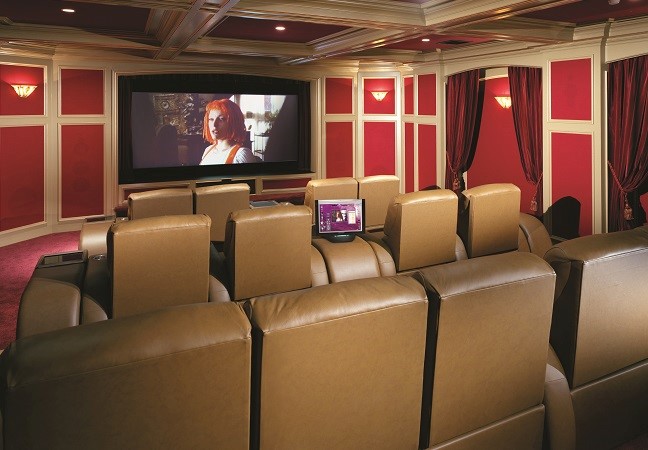What’s Hot in Home Entertainment Systems Right Now?
Some Need-to-Know Basics About Home Audio Video in 2016

We’ve all been there: buy a computer or smartphone and one year later it’s already obsolete. Not only is it a hassle, but it puts you off from investing in the next model for fear that the cycle will repeat itself. When building a home entertainment system in your Lake Tahoe residence, you definitely don’t want to run into the same problem. That’s why we’ve put together this blog to help guide you to the technology trends that will still be around for years to come.
See Also: Music at Your Fingertips: A Unique Home Media Solution
4K: What is it?
Do you remember the days of tube televisions and blurry standard definition? Those dark times came to an end about a decade ago when 1080p HD completely revolutionized the way we watch movies and TV shows. Not only did the density of pixels increase on any screen, but a complete redefinition of the size and shape of video displays across the country. It seemed as though nothing could be better. Nothing, that is, until 4K.
Also known as Ultra High Definition, 4K presents four times the number of pixels of 1080p. And while 4K’s major rollout wasn’t accompanied by a big switch to a 16:9 aspect ratio the way the previous HD upgrade was, it makes larger screens and greater viewing angles more common.
Plus, with the launch of the “Ultra HD Premium” branding at this year’s Consumer Electronics Show, 4K is becoming impossible to ignore. The labeling lets you know that your 4K video display meets the standards of the UHD Alliance, including color, resolution, peak luminance, black levels, color gamut and HDR compatibility. When you see the “premium” branding, you’ll know you’re getting a quality product.
HDR: What is it?
By now it’s a bit of a moot point, considering the UHD Alliance has made the technology a standard for their “Premium” badge, but it’s still an interesting new upgrade to video images.
High dynamic range is a technology that emerged relatively recently in the field of digital photography. Essentially, it creates an image with an incredibly wide color spectrum, reproducing realistic details that are frequently missing from digital images. It was quickly adopted by digital cinematographers, and now many of the movies and television shows you watch are shot in HDR.
What does it mean for you? Well, a video image played back in HDR will have more color depth, more details and look more realistic than a non-HDR image. On a massive 70” screen, you can imagine that would make a big difference.
However, there’s still some debate about the format. Many feel that the extra details don’t actually add much to a given image, and plenty of manufacturers have neglected to include it in their current 4K television and projector lines. Never fear though, because all it takes is a firmware upgrade to make your video display compatible with HDR.
Immersive Audio: What is it?
For years we’ve had to settle for sub-par audio from our surround sound systems. Don’t get us wrong, manufacturers were doing their best to create excellent components with the technology available, but they weren’t able to recreate a genuine movie theater experience in your home. Today, thanks to the audio experts at Dolby and Auro3D, you can achieve commercial-quality sounds in your own private cinema.
Immersive audio is as big a change for the world of sound mixing as HD was for video recording. The emergence of the first surround sound in the 1970s meant that professional mixers could place sounds in front of, to the sides, and behind the listener, making for an incredible level of sonic realism.
But it had its limits. Each sound had to be assigned to a channel, or speaker, and couldn’t move from that position. It could also only be played from a different channel either simultaneously or in succession. This had the unwanted effect of stilting the sound’s movements.
Relatively recently, Dolby introduced a new way of mixing sound. By eliminating the channels and treating each sound as an individual object, they were able to move sounds across the room in a completely realistic way. They also added a set of speakers positioned above the listener, to create a spherical soundscape.
The beauty of this sound format is that it can be recreated with as few as seven speakers, and as many as 60. That means your home audio is reproduced in true theater-quality.
And with 4K Blu-Ray producers like Warner Brothers and Lions Gate committing to the immersive audio formats on their discs, you don’t have to wonder if you’re getting the best quality sound.
We hope this blog helped clarify some of your questions about the latest trends in home entertainment system technology. If you want to learn more, contact us today.
- Tags: 4K | audio video | HDR | Immersive Audio
